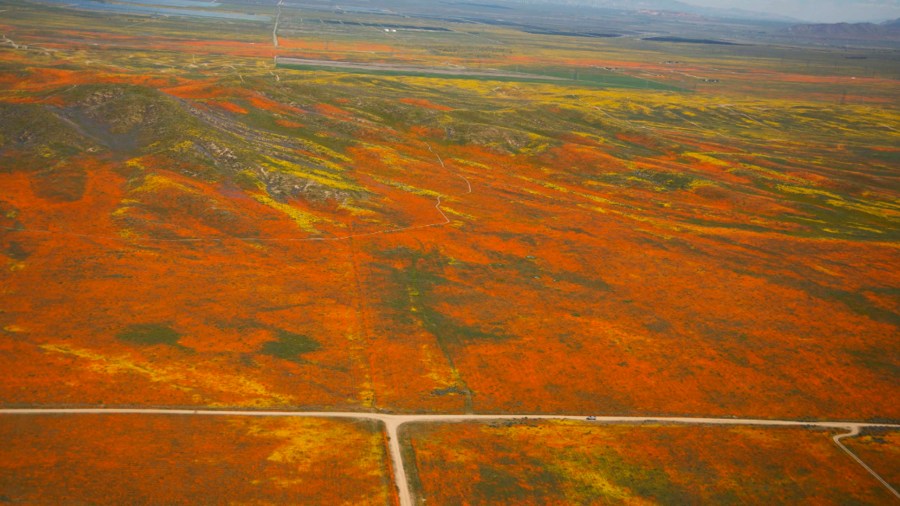There’s more to the California wildflower blooms than meets the human eye, experts say.
NASA’s Caltech Jet Propulsion Laboratory released findings on Monday surrounding a “first-of-a-kind” study of flower cycles in the Golden State that could serve as a potential new tool for farmers and natural resource managers.
The study employed a JPL-built imaging spectrometer that mapped thousands of acres of nature preserve in hundreds of wavelengths of light, capturing flowers as they blossomed and aged over the course of months.
According to JPL research scientist David Schimel, the experiment was the first time the instrument had been deployed to track vegetation steadily through the growing season, making it a “first-of-a-kind study.”

The imaging spectrometer allows for large scale analysis, as opposed to the boots-on-the-ground observations and time-lapse photography methods that are typically used but aren’t as good as capturing broader changes.
“One challenge is that compared to leaves or other parts of a plant, flowers can be pretty ephemeral,” said the study’s lead author, Yoseline Angel, who is a scientist at the University of Maryland-College Park and NASA’s Goddard Space Flight Center. “They may last only a few weeks.”
Thus, scientists took to the skies to analyze the flower blooms’ most spectacular qualities: their vibrant colors.
For example, during a six-month long 2022 aerial vegetation survey of two reserves in Santa Barbara County, scientists observed two native shrub species and were able to identify different flowering stages and spectral differences among flowers, leaves and background cover that crowded the image.
Experts stated that this study paves the way for more air- and space-based studies of flowering plants, which represent around 90% of all plant species on land, according to NASA.

The data and technology could also support farmers and natural resource managers who depend on these flowering plants – along with insects and other pollinators – to produce commodities such as fruit, nuts, cotton and medicines.
The wildflower study was part of the Surface Biology and Geology High-Frequency Time Series (SHIFT) campaign jointly led by the Nature Conservancy, UCSB and the Jet Propulsion Laboratory, which is located at Caltech in Pasadena.
